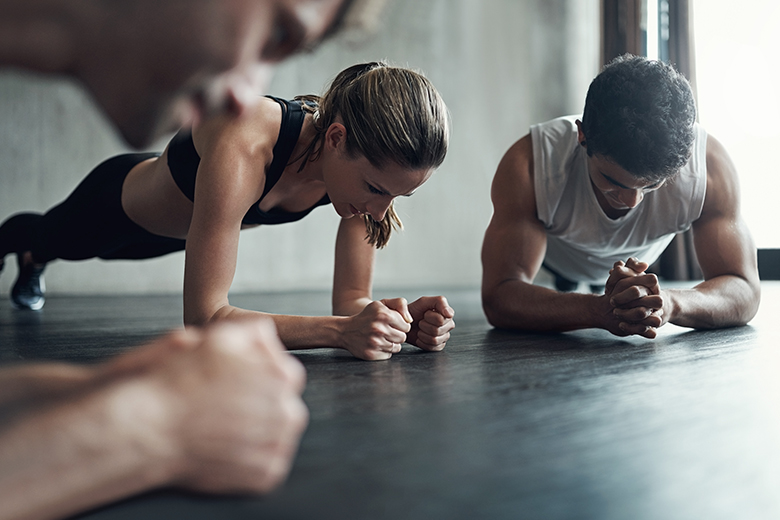Let’s face it: when you have a strong core, everything in life becomes a little easier. The secret to a rock solid core? You guessed it… planks!
A plank is a simple, effective bodyweight movement that requires no equipment and can be performed just about anywhere. It sounds simple, yet there’s something about holding your body stiff as a board that makes us shudder and shake. However, research suggests that less than 10 minutes of correct planking a few times a week strengthens the core more effectively than doing a thousand crunches can.
The move involves not only your abs but also your lower back, glutes, hamstrings, shoulders, chest and upper back—so it’s also a test of muscle control that helps you progress during your workout and outside of it. Planks help improve your posture, running form and prevent back pain while serve as the base for a number of exercises such as the push-up and other strength-training movements.
Let’s get into the Dos and Don’ts of planks so you can get your whittled middle aka carved abs.
Dos
Press your heels to the wall behind you: This tightens up muscles from your upper back to your calves and helps support your hips and lower back by decreasing undue pressure on your abs.
Make sure your body is in a line: Keep your head, spine and toes in a single line and your arms directly beneath your shoulders to help work your core correctly. Your body should feel long from head to toe.
Squeeze your glutes & quads: Keeping your body tight will ensure you’re building the right muscles while also keeps your hips and lower back stable while developing muscle strength.
Breathe: Your muscles need oxygen, especially when they are in motion . Make sure you’re getting a steady flow by breathing in and out correctly at all times. Bonus? It’ll keep you distracted to help the time pass more quickly.
Don’ts
Arch your back: This affects your overall plank form and doesn’t engage your abdominal muscles sufficiently and puts weight on your arms. Make sure you’re keeping your shoulders down and wide.
Tilt your head up: Your neck should be in line with your body to avoid it getting strained so don’t tilt your head up. Avoid letting your head hang to avoid overstretching the muscles of your back and muscles and to keep your spine in alignment with your body.
Sag your hips: Sagging your hips will force your arms and toes to support your weight without engaging your abs. It also puts your lower back at risk of injury because it sways more than is normal.
Lift your bum in the air: Planks aren’t supposed to look like a downward dog position gone wrong. By lifting your butt in the air, your core isn’t doing much to support your weight or engage your abs as it should.
The plank is a great exercise to develop core strength and improve stability and can also be used as a preventative measure for lower back pain. The humble move can also be elevated with variations and challenges that’ll help you get stronger with every rep. Happy Planking!




Leave a reply